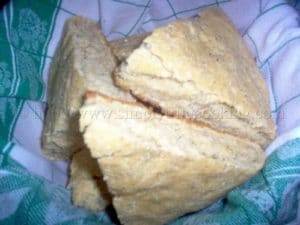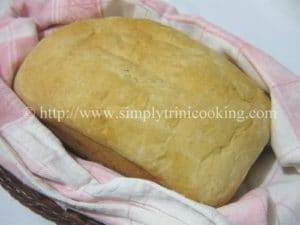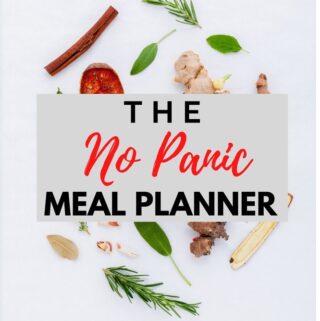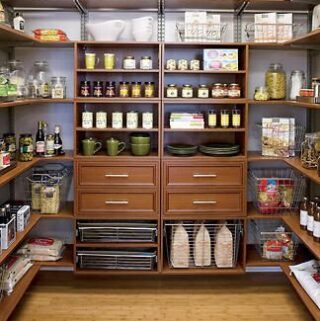Everyone should know about making bread. Bread is one the the most popular and essential food enjoyed by many families in many countries. In some countries, it is a staple food, such as tortillas in Mexico. The type of bread vary from country to country: each having its own special features and characteristics; different flavors, forms and sizes. Thus we have roti, naan, bake, bagels, tortillas, brioche, baguettes, puris, lavash, pretzels, bolillo, plain, sweet, coconut, spelt, and emmer breads, etc.
Making bread
Breads are prepared in different ways: by steaming, baking or frying. It is also eaten in different ways, dependent on the personal needs and preferences. For instance, in Peru, a sweet bread is eaten together with hot chocolate and butter. Besides eating, it can also be a joy to make once you learn how to make it.
Many people think making bread is difficult, but once you understand the features and characteristics of dough you can come to enjoy making it. This article will begin a series of posts on making some of our favorite breads in Trinidad and Tobago. This article will focus on helping you learn a little more about bread and how to make it. (Look out for other post that will feature some simple bread recipes and tips.) Let's begin!
The Ingredients Used
Bread is commonly made using wheat-flour (which has a high level of gluten), water, salt, fat and a leavening agent. Other types of flour used are emmer, durum, spelt, maize, rye, oats, barley, granary, brown flour or malted white flour and rye grain. White bread is made from plain flour that only has the center part of the grain or the endosperm. Brown or wheat bread includes the flour and 10% bran.
Brown bread can also refer to white bread with colouring added to make it brown in colour. Then there is bread made using wheat germ for added flavour. Wholewheat or whole grain bread is made using the entire wheat grain (bran and the endosperm) which helps boost the fiber content. Other ingredients, such as egg, sugar, milk, spice, fruit, nut or seed, or a vegetable, can be included.
Homemade bread is most enjoyed for its quality, taste, texture and aroma. If you want to successfully make bread, you have to know more about its composition and chemistry. You also have to know about the balance between the ingredients in order to get the result you are looking for. When you choose the right ingredients, your bread is delicious and can keep for days or weeks.
The amount of flour and water used determines its texture. Water (or any other liquid such as fruit juice or dairy liquid) is used to create the dough or paste. The volume of liquid used depends on the amount of flour used. Professional bakers determine that for every 100% of flour used, 50% of water should be added. This should produce a light and finely textured bread.
Other formulas state 60% to 75% water. The water percentages for yeast bread is generally higher, thus leading to a coarser crumb structure. Thus the ratio of liquid to flour is about 1 cup of liquid to 3 cups of flour for yeast breads ( 1 : 3). The ratio will vary according to the recipe or the method of cooking (steaming, frying or baking). So it is important to stick to the ratios provided in the recipes, and after some practice you can change the amounts slightly to the get the flavor and texture you prefer.
However, flour, the primary structure of bread, gives protein and starch to it. The protein in the flour has 3 water soluble protein groups (globulin, albumin, proteoses) and 2 non-water soluble protein groups (gliadin and glutenin). When the flour mixes with water, the water-soluble proteins dissolve, which trigger gliadin and glutenin to create the structure of the remaining dough. Glutenin create strands of long, thin and chain-like molecules when kneaded, while gliadin creates bridges between glutenin strands. The networks of strands created by the two proteins are called gluten. Gluten boosts the quality of the dough.
The leavening agents used
The gluten in bread gives it a chewy textures and helps it rise properly. However, this happens most during the leavening process. The leavening process is important in bread making so that it is both chewy and tasty. The leavening process involves putting gas to dough - during or before the baking time. This can be done in several ways.
The first involves the use of baking powder or self-rising flour that also includes baking powder. The second involves adding an acidic ingredient, like baking soda and buttermilk. Such breads developed through these methods are generally soda breads or quick breads, such as banana bread, sweet bread and muffins. The third method involves the use of yeast. Bread that is leavened using yeast, helps produce a bread that has a flavorful texture.
You should note that bread is also prepared without the use of any leavening agents, yeast or sourdough culture. These "flat breads" or "unleavened breads" also hold a religious significance for the Jewish and Christian religions.
Variation in the ingredients changes the texture
You are encouraged to familiarize yourself with the baking ingredients and tools for bread making. You will be surprised how a little change in one ingredient can change the nature of the bread you are making. For instance:
- Liquid sweeteners like honey and molasses provide moistness, while giving it a better appearance and a longer shelf-life. However, it is recommended to use ⅓ cup of honey for every 2 loaves. You should also note that high temperatures can make the honey scorch and brown the bread.
- Salt is necessary; it boosts the flavor and manages the fermentation process. Without salt, the bread can be flat and tasteless. Salt should not be added to the dissolving yeast; it can prevent its growth.
- If you use flour that has lower than 16% protein, you will need to add more gluten. One to two tablespoons for every loaf is adequate; too much causes the bread to become rubbery and tough.
- Oats or oatmeal provides added moisture and crunch. Add 1 cup of rolled oats for every 2 loaves. Pour 1 to 2 cups of boiling water over the oats and allow to cool before use. You can also use quick oats. It can be processed fine before using.
Learn more about baking bread
So, if you want to learn a lot more on making bread, stick with us here at Simply Trini Cooking. In the mean time, you can try some of the bread recipes we already have on this site... Or, you can also look forward to the few simple bread recipes we have in store for you. These recipes will be very detailed. So get your aprons ready, because we are going to bake soon. Also, look out for ,more bread baking and cooking tips that will be posted often in this site. If you enjoy making bread do post your comment here. Tell us what you enjoy about making bread.









Henry
I'm just learning how to make bread. But i'm sure i'll not be able to make it the way my Grandfather used to make Bread in St.Kitts as he was a Braker for much of his long life and has passed on. All his male kids used to assist and help him bake bread in the shop as well so they knew something about baking bread and the various kind.
He used to have Pork Bread, Various others and my all time hands down favorite a Yellow Bread that always had what seem a buttery taste as well being Orange Yellow in color. They tasted so good once you started eating you ate the entire bread. I had no idea what was in the bread. But as a kid i remember they used to have these numerous 5 gallon bucket of a reddish/orange butter that went into the bread. In time i've come to likely realize it might have been some variety of Golden Ray Butter.
Felix
I'm especially interested in the pork bread. Tell me how it tasted and looked. Sounds interesting 🙂